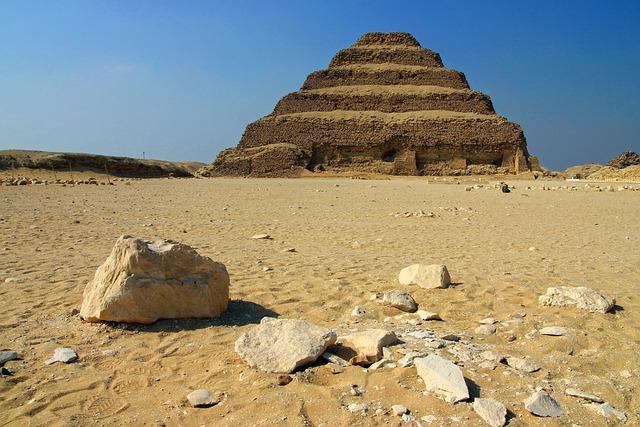In Saqqara, not far from the ruins of the ancient Egyptian city of Memphis, among the 12 royal pyramids, is the oldest pyramid of Egypt. This pyramid is one of the most impressive ancient monuments. The reason for this is not only her grandeur but also her age – and he is more than impressive. The six-step pyramid of Djoser is more than 4,700 years old today. So what secrets does this magnificent structure hide?
The pyramid of Djoser is considered the forerunner of all the Egyptian pyramids that have survived to this day, those that were created in Ancient Egypt, including the three pyramids on the Giza plateau – Cheops, Khafre and Menkaure. For obvious reasons, it is impossible to find out the exact date of the pyramid’s construction. Still, it is believed that it was erected around 2650 BC as a burial temple for the family of the first pharaoh of the III dynasty of the Ancient Kingdom of Djoser.
This pyramid consists of six steps, but the hot, desert wind blunted its sharp edges long ago, and several hundred generations of robbers, destroyers and even ordinary residents who needed building material for their own homes removed the once splendidly polished cladding from it. Now, this structure no longer shines in the rays of the sun; it seems to grow straight out of the sand and is one with it.
Imagine the size of the Djoser pyramid; imagine three ordinary 9-storey buildings standing on top of each other – this will be the width of the base. The length is four 9-storey buildings.
The pyramid rises almost 60 meters in height. It is a huge giant that rests on a solid limestone rock. A whole labyrinth of wide and narrow corridors, with a total length of almost a kilometre, is built inside this mighty structure.
In that distant 2650, the order for the construction of this pyramid was given by Imhotep. At first, he planned to create a simple one-level tomb, of which there were many at that moment, but over time his decision changed – he ordered the construction of a multi-stage pyramid so that Djoser’s soul could rise from the earth straight to heaven through these steps.
Today, the pyramid of Djoser is the most ancient Egyptian pyramid, so it is not surprising that millions of tourists come to it every year. For so many years, it has stood on the ground in such harsh conditions, and at the same time, it is still well preserved and still impressive in its shape and size.
The most mysterious thing about the Djoser pyramid is that scientists still have not found a single text, no documents at all describing its construction. With all the abundance of artefacts, there is no single written evidence of how exactly this complex was built. Therefore, we still do not know why Imhotep used not bricks and clay (which would be much more convenient), but substantial massive stones, which today are not so easy to carry and install. Experts believe that for the construction of the pyramid, special ramps were used – with their help, it would be possible to put the stones in place, and then, apparently, the workers fixed them in place.
Inside the pyramid, Imhotep ordered the construction of 11 burial chambers – so that there would be enough for all members of the pharaoh’s family. Interestingly, when archaeologists dug up the inner chambers of the pyramid, they found the wives of the pharaoh, his children, but the mummy of Djoser was not there. Also disappeared almost all the jewellery and sacred objects with which he was buried.
We can only guess how many people have been inside this structure before it was recorded in writing. All we know for sure is that between 1798 and 1801, Napoleon’s men visited it. They found this pyramid during their Egyptian campaign.
If you enter the pyramid, the visitor will first see a tunnel with columns and a labyrinth of many small rooms and tunnels, which gradually lead to 28 meters underground. According to ideas about the world order of that time, the entrance to all structures, including the pyramid itself, was made from the north side.
Of course, scientists would love to find some documents as to why the pyramid was built this way and not otherwise. Why was it necessary to take substantial, heavy stones if other pyramids of that time were quite successfully built from smaller bricks. Why is the structure of the corridors the same and not different? Scientists can only speculate. For example, in the encyclopedia of ancient history, Egyptologist Miroslav Verner suggested the following: “A simple but effective construction method was used. The masonry was laid not vertically but along the slopes towards the middle of the pyramid, which increased its structural stability.”
In other words, Imhotep wanted this entire complex to be not just a royal tomb but a monumental structure that would leave a mark on history. And he must admit that thanks to unique ideas and a far-sighted approach to construction, Imhotep succeeded.
Even today, the architecture of all the Egyptian pyramids amazes both professionals and ordinary visitors. Perhaps ignorance of all their mysteries is for the best; at least it adds even more charm and unknown to them.
